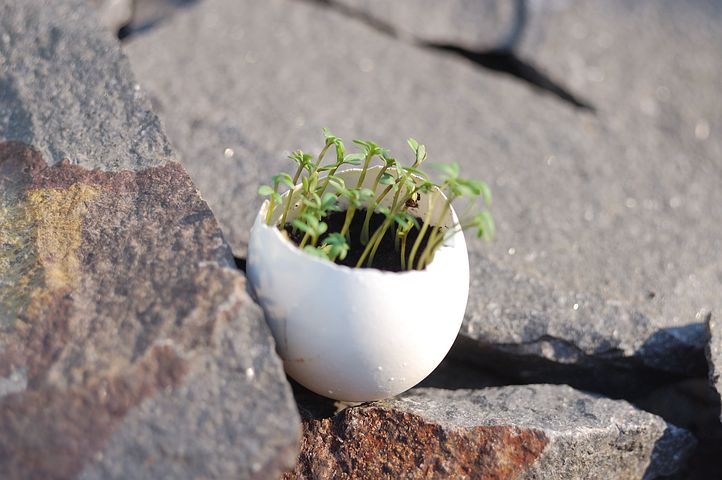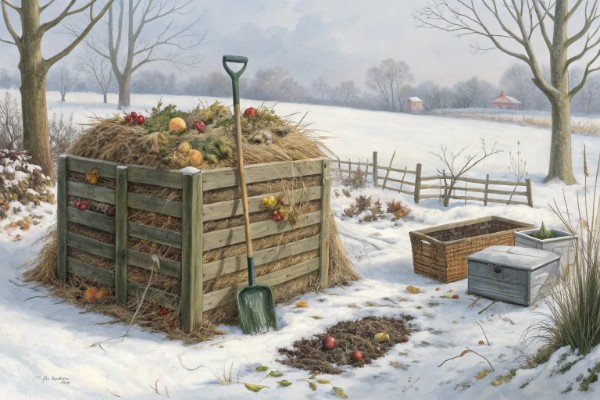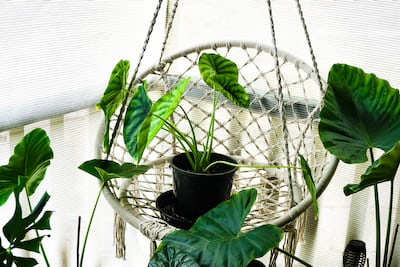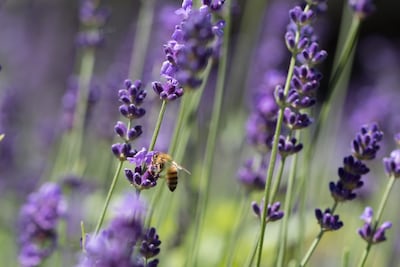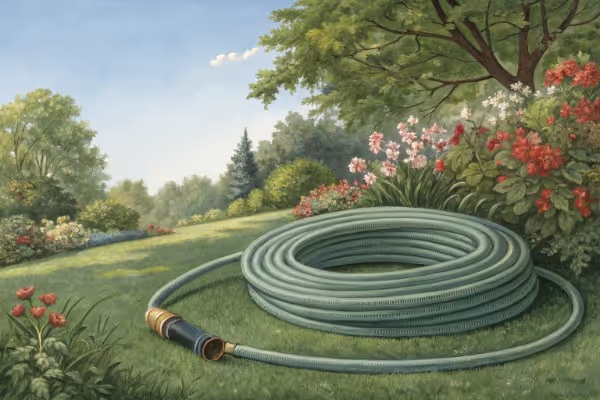pH Balancing for Home Gardeners: Myths and Real Methods
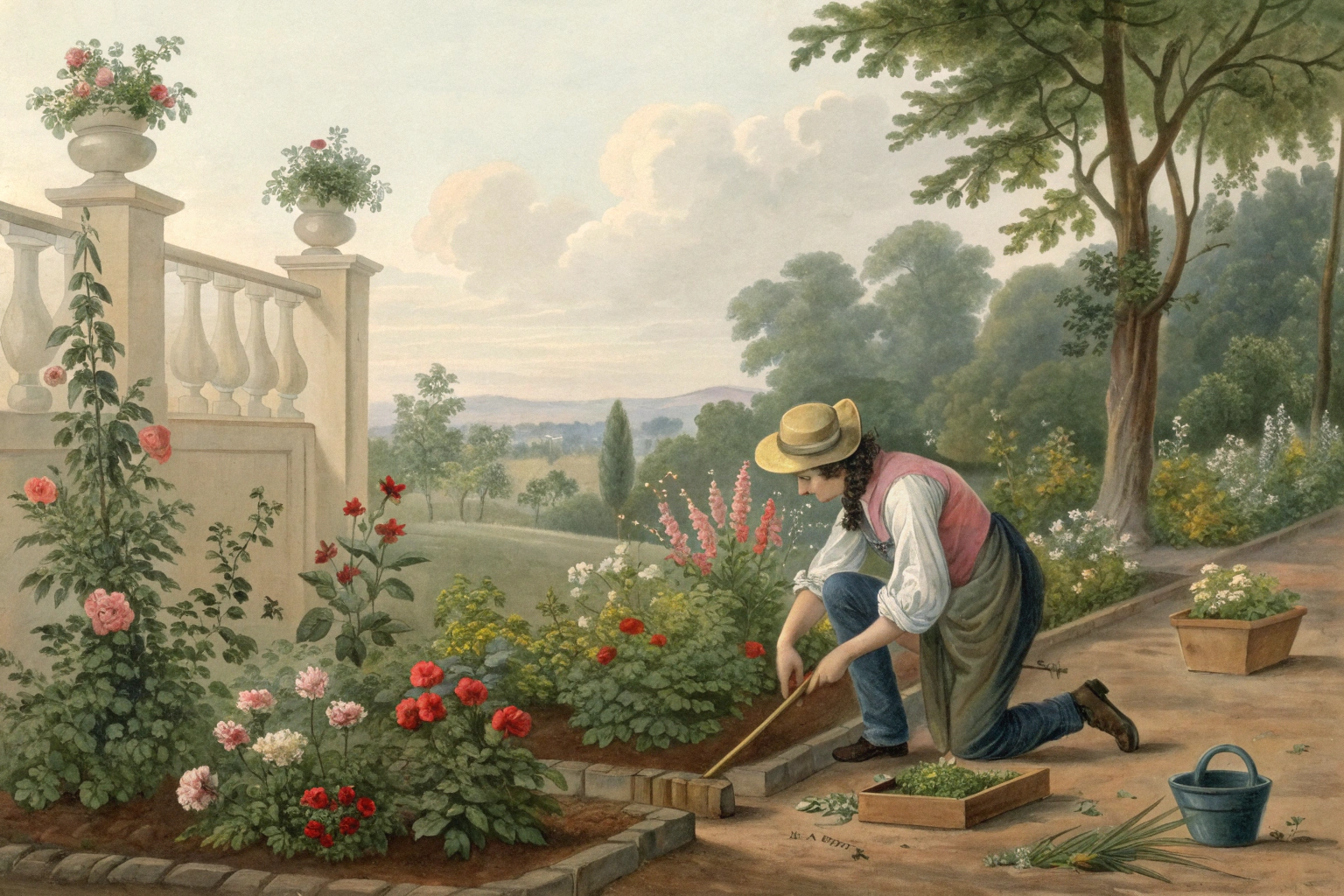
Soil pH gardening
Start soil pH gardening by testing; most veggies thrive at pH 6.0–7.0 for full nutrient access and yield. In soil pH gardening, use lime to raise pH and elemental sulfur to lower it; follow label rates and retest in 4–6 weeks. Soil pH gardening runs smoother with buffers: work in 1–2 inches compost each season, watch irrigation water alkalinity, and go easy on ammonium-heavy feeds that acidify.
Expect straight talk, tested methods, and clear rates you can put to work this season.
Cheatsheet: Fast pH Balancing for Productive Gardens
🧪 Start: Test Soil pH
- Test yearly or before new plantings.
- Ideal range: 6.0–7.0 for most edibles.
- Acidic (<6.0): blueberries, azaleas thrive.
- Alkaline (>7.5): lavender, asparagus suit.
🚫 Myths to Skip
- Lemon juice, vinegar act temporarily only.
- Eggshells change pH slowly, if at all.
- Coffee grounds: minimal effect on pH.
✅ Real Solutions
- Lime (dolomitic or calcitic): raises pH.
- Sulfur: lowers pH.
- Mix amendments thoroughly to 6–8 in. (15–20 cm) depth.
- Recheck pH after 4–12 weeks.
🍅 Health & Nutrition Boost
- Balanced pH = better nutrient uptake.
- Improved crop flavor, yield, & vitamin content.
- Lower disease risk; supports self-sufficiency.
🧰 Tools and Products You'll Need
- Soil pH test kit or digital meter
- Garden gloves
- Garden fork or spade
- Dolomitic or calcitic lime
- Elemental sulfur
- Watering can or hose
pH Balancing for Home Gardeners: Myths and Real Methods
I learned soil attitude the hard way when my tomatoes looked fine up top while the roots sulked in sour dirt. A cheap test later, a bag of lime, and the bed woke up like it had a double espresso.
This is soil pH gardening in a nutshell. A quiet lever that flips nutrients from locked to available, microbes from sleepy to busy, and plants from polite to hungry.
What pH means and why it runs the show
Soil pH is a logarithmic scale from 0 to 14 where 7 is neutral and each whole unit is a tenfold change in acidity. Low pH tightens the vise on phosphorus and mollifies calcium, high pH chokes iron and manganese and slows zinc to a crawl.
“Most garden crops grow best at pH 6.0 to 7.0.” University of Minnesota Extension
Below pH 5.5, dissolved aluminum starts nipping at roots. Above 7.5, you often see chlorosis on blueberries, rhodies, and pin oaks because iron is sitting there, insoluble, just taunting you.
Test first, not guess
A lab soil test costs about 15 to 30 USD, and it gives pH, buffer pH, organic matter, and amendment rates tailored to your soil. Pull 10 to 15 cores 6 inches deep, 15 cm, mix, air dry, then send.
I still keep a decent pH meter for spot checks. Calibrate with pH 4 and 7 solutions, clean the probe, and use a 1 soil to 1 water slurry by volume for consistency.
Myths I retired in my beds
- Vinegar in the watering can. It moves needle tips for a day, then soil buffers it away, and roots do not like the burn.
- Coffee grounds make beds acidic. Spent grounds test near neutral and only nudge pH if you add a truckload.
- Eggshells fix pH quickly. They need fine grinding and months to break down, so they feed calcium, which is great, but they barely shift pH.
- Gypsum lowers pH. It adds calcium sulfate, improves sodic soils, and helps structure, yet pH stays about the same.
- Epsom salt changes pH. It supplies magnesium and sulfur without meaningful pH movement, and overdoses can backfire on potassium uptake.
- Aluminum sulfate is safe for everything. It acidifies fast, sure, but aluminum can stress roots, so I avoid it on edibles.
- Peat moss solves acidity forever. It lowers pH for a while, then microbes chew through it, and bogs pay the price, so I use it sparingly.
Real methods that actually move the needle
- To raise pH: use calcitic lime for calcium or dolomitic lime if the lab flags low magnesium. Pelletized lime spreads cleanly and reacts as fast as powder thanks to finer grind inside each pellet.
- Typical garden corrections sit around 25 to 50 pounds per 1,000 square feet, 1.2 to 2.4 kg per 100 square meters, yet texture rules the rate. Sandy soils shift fast, clays resist, so follow the lab sheet, not the bag.
- To lower pH: elemental sulfur is my steady tool. Soil bacteria oxidize it to sulfuric acid, which pulls pH down over weeks to months, faster in warm, moist soil above 55 F, 13 C.
- Iron sulfate works quicker and feeds iron, handy for high pH ornamentals. Acid-forming fertilizers, like ammonium sulfate 21-0-0, nudge pH down over a season while feeding nitrogen.
- Wood ash raises pH hard and fast and adds potassium and micronutrients. I keep it under 5 gallons per 1,000 square feet, about 19 liters per 100 square meters, and never in blueberry country.
- Compost adds buffering capacity and life. It steadies swings but does not replace lime or sulfur.
“Elemental sulfur requires microbial oxidation and may take several months to fully acidify soil.” Cooperative Extension guidance, OSU and UF/IFAS
Buffering, CEC, and base saturation without the jargon headache
Clay and organic matter act like a battery that holds acidity or alkalinity, which is why loams change slowly and sands flip fast. Labs measure buffer pH to calculate how much amendment breaks through that battery.
Base saturation is the share of exchange sites filled with calcium, magnesium, potassium, and sodium versus acidity. If calcium is low and magnesium normal, I pick calcitic lime, if magnesium is low, I choose dolomitic.
Crop targets I actually use
- Blueberries, azalea, rhododendron: pH 4.5 to 5.5. I pre-acidify beds with sulfur months ahead and mulch with pine fines.
- Potatoes: pH 5.0 to 6.0 to reduce common scab pressure. I skip liming that bed.
- Most vegetables, herbs, lawn: pH 6.0 to 7.0. Tomatoes, peppers, beans, and turf stay happiest here.
- Asparagus and many brassicas: pH 6.5 to 7.5. Higher pH helps keep clubroot at bay in brassicas.
- Hydrangea color shifts with pH and aluminum availability. Acidic soil with available aluminum gives blue, near neutral shifts pink.
Water, mulch, and seasonality matter more than ads suggest
Rain lands near pH 5.6, and alkaline irrigation water can lift container pH in a single season. I checked my municipal water report for alkalinity, then collected rainwater for blueberry pots and hit stability in two weeks.
Mulch slows pH drift by feeding microbes and shading soil. I retest every 2 to 3 years in beds, yearly in containers that leach and swing faster.
My field notes and quick wins
- A tomato bed at pH 5.6 got 25 pounds of calcitic lime per 1,000 square feet, 1.2 kg per 100 square meters, in fall. By spring, pH 6.4 and blossom end rot eased without chasing calcium sprays.
- Blueberries moved from 6.6 to 5.3 over a year with two split applications of elemental sulfur at 2 pounds per 100 square feet, about 1 kg per 9 square meters, plus rainwater irrigation.
- One hydrangea, two halves, two colors. I limed the right side lightly, sulfur on the left, and by summer it looked like a flag.
Buyer’s guide for soil pH gardening gear
- Lab tests: start with your cooperative extension. Turnaround 1 to 2 weeks, and you get lime or sulfur rates based on buffer pH, which no home kit guesses correctly.
- pH meters: pick a probe with automatic temperature compensation and a replaceable electrode. Calibrate monthly with pH 4 and 7 buffers, expect 35 to 150 USD, 33 to 140 EUR.
- Dye kits and strips: fine for trend spotting. For a slurry test, use equal volumes of soil and distilled water, stir, settle, then read consistently.
- Amendments: calcitic lime for calcium, dolomitic lime for magnesium, pelletized for easier spreading. Elemental sulfur at 90 percent prill for steady acidification, ammonium sulfate for feeding acid lovers, aluminum sulfate for ornamentals only and with restraint.
- Safety: dust mask, gloves, and water rinse for tools. I keep kids and pets out until the dust settles.
How fast does pH change
Lime starts to show in 4 to 8 weeks and settles in by 3 to 6 months, faster with moisture and warmth. Sulfur takes 2 to 6 months depending on temperature, moisture, and particle size, so I split applications and recheck at 3 and 6 months.
“One pH unit is a tenfold change in acidity.” USDA NRCS
Soil pH gardening FAQ
- Can compost fix pH? It buffers swings, feeds microbes, and improves structure, but it will not push pH a full unit by itself.
- Do I need gypsum? Only for sodic soils, calcium without shifting pH, or to counter high magnesium clays. It is not a lime substitute.
- Can I mix lime and fertilizer? I separate lime from urea or ammonium forms by a week to avoid ammonia loss, and I water in after each pass.
- Is pelletized lime slower than powdered? No. Fineness inside the pellet drives speed, and pellets spread evenly, which often wins.
- How often should I test? Every 2 to 3 years for beds, yearly for raised beds and containers, and always after big amendments.
Sources I trust and quotes worth taping to the shed wall
- University of Minnesota Extension. “Most garden crops grow best at pH 6.0 to 7.0.” Clear, practical ranges for vegetables and turf.
- USDA NRCS. “One pH unit is a tenfold change in acidity.” Helpful for grasping why small numbers mean big shifts.
- Cornell Cooperative Extension. Reliable limestone and sulfur guidance by soil texture and buffer pH.
- Royal Horticultural Society. Straight talk on ericaceous plants, hydrangea color, and liming frequency.
- North Carolina State Extension. Blueberry production notes with pH 4.5 to 5.5 targets and sulfur rates.
- Ontario Ministry of Agriculture, Food and Rural Affairs. Elemental sulfur application and expected timelines.
Final calibration tip I live by
Adjust in half steps and retest. Soil forgives patience and punishes haste, and that is the whole art of soil pH gardening.

Want smarter plant choices? 🪴
Frequently Asked Questions: Soil pH Gardening
How often should I test my garden soil’s pH?
Test your soil once every season (spring, summer, or fall) if you grow demanding crops like blueberries or roses, or every two years for less sensitive plants. Rainfall, fertilizers, and compost can all shift pH over time, so regular testing helps you catch changes early.
Can I rely on simple home pH test kits?
Simple test kits offer a rough estimate but sometimes give inconsistent results, especially in soils with high organic content or if instructions aren’t followed precisely. For accurate soil pH gardening, use a calibrated digital meter or submit samples to a professional lab for testing.
Do coffee grounds, eggshells, or vinegar really change soil pH?
Household items like coffee grounds, eggshells, or vinegar do not create significant or lasting shifts in soil pH. These substances break down too slowly or in too small quantities to impact your garden beds. For real changes, choose agricultural lime to raise pH or elemental sulfur to lower it, following recommended application rates on the product label.
How long does it take for pH amendments to work in the garden?
Lime or sulfur can take several weeks or even a few months to change soil pH fully, depending on temperature and soil moisture. In warm, moist conditions (above 60°F / 16°C), changes happen faster, while cold or dry soils slow the process. Always retest after several weeks to confirm results.
Can compost alone balance soil pH?
Compost improves soil health but rarely adjusts pH significantly. It can buffer changes, gently nudging extreme values toward neutral, but it cannot correct soils that are highly acidic or alkaline. Use compost to support healthy soil structure and biology, combined with targeted pH adjustments for precise results.
Should I adjust soil pH for all plants in my garden?
No. Different plants thrive in different pH ranges. For example, blueberries prefer acidic soil (pH 4.5 to 5.5), while most vegetables grow best near neutral (pH 6.0 to 7.0). Adjust soil pH gardening strategies only where needed and group plants with similar needs for easier maintenance.
Here is the short take for soil pH gardening: start with a real test, pick a crop target, then fix only what needs fixing. Most veggies ride best at 6.0 to 7.0, blueberries like 4.5 to 5.5. Use agricultural lime to raise pH, use elemental sulfur to lower it, apply modest rates, mix well, water in, then retest in 6 to 8 weeks. Compost feeds life and buffers swings, it does not snap pH overnight. Sandy soil shifts faster than clay, dose accordingly. Skip the coffee and vinegar myths.
In soil pH gardening, watch your water and fertilizer, both nudge pH over time. Keep notes, keep doses small, stay patient. For bed building and texture that plays nice with pH, see soil for a vegetable garden. Off pH can show as a tomato plant not flowering. If the whole patch sulks, this guide can help connect the dots: why do my vegetable plants keep dying. Keep it simple, stay curious, and let the soil do the heavy lifting.
The Prepper’s Guide to Soil pH Gardening
Resilient gardens support food security and self-reliance. Mastering soil pH prevents failed yields and protects your investment in seeds and labor, no matter what supply chains or weather threaten. Nearly 60% of common homegrown crops underperform with pH outside their range; you can triple your harvest weight with attentive management.
Field-Tested Methods for Reliable pH Balancing
- Stock agricultural lime (calcium carbonate), wood ash, and food-grade sulfur. These shelf-stable amendments suit both emergency use and seasonal correction without industry dependence.
- Collect white vinegar and baking soda to make quick, makeshift soil pH tests if you lose access to commercial kits. For more accuracy, store a supply of pH indicator strips (range 4.0–9.0). Secure them against moisture for years of storage.
- Harvest rainwater in barrels; city tapwater often drifts alkaline and shifts soil chemistry over seasons. Surface water, especially from coniferous woods, lowers pH due to organic acids.
Long-Term pH Buffering and Crop Rotation
- Practice biochar incorporation: charred plant material retains nutrients and stabilizes pH for decades. Mix biochar with compost and apply up to 5% by soil volume each autumn.
- Rotate acid-demanding crops (potatoes, blueberries) and base-demanding ones (brassicas, asparagus) to balance extraction and amendment needs.
- Use deep-rooted dynamic accumulators like comfrey and dandelion to pull minerals from subsoil, feeding compost and balancing pH biologically.
Nutritional Resilience Through pH-Aware Growing
- Low pH reduces calcium and magnesium uptake; monitor for blossom end rot in tomatoes, leaf tip burn in spinach, and weak beans. Employ rock dusts for mineral insurance.
- High pH locks out iron and phosphorus—a risk for strawberries, leafy greens, and corn. Supplement with chelated iron or acidify irrigation with 1 tbsp vinegar per gallon (4 L) if shortages appear.
- Maintaining optimal pH (6.2–7.0 most crops, 4.8–5.2 for blueberries) preserves vitamin C levels, boosts root health, and reduces pest damage, shrinking the need for outside fertilizers or sprays.
pH Stewardship Without the Grid
- Solar-powered water pumps or gravity-fed irrigation limit reliance on infrastructure. Solar meters (stored with silica gel) offer off-grid pH monitoring if batteries are unavailable.
- Compost leaf litter and sawdust from untreated wood for gentle, ongoing pH acidification. Mix pine needles into paths and perennial beds for incremental acidifying effects.
Preppers equipped with pH knowledge and local materials control food quality and security, even under uncertain future conditions.
Find out which plants will thrive in your garden!
Answer a few fun questions and get custom plant recommendations perfect for your space. Let’s grow something amazing together!

start your season

